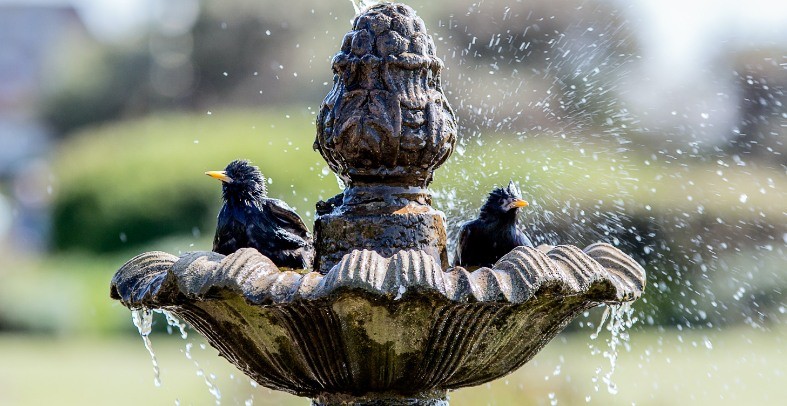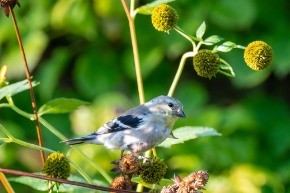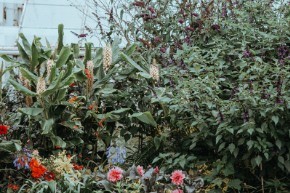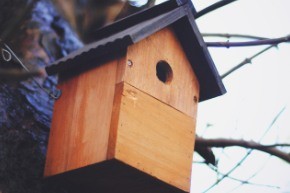6 Best Tips On How To Attract Birds To Your Ground Feeders. By sharpening your creativity, you will start to attract your avian guests. Putting in more effort around the garden is paramount if you want to attract more birds to your ground feeders.
Integrate water features

Another top tip for attracting birds to your garden is to place a fountain near your ground feeding areas. Birds are attracted to moving water since it helps purify the water. Think of a beautiful garden with a flowing stream filled with clean, sparkling water and lots of birds flying above the water surface.
Water features require a little extra effort than other methods, but they are enticing to birds. Birdbaths are also a decent option for fountains and moving streams. A stand-alone pedal birdbath is an appealing choice to place next to your ground feeders.
Improve Your Gardens Vegetation

Surprisingly, well-manicured lawns and lowly cut grass are not so inviting to birds. It is wise to let the grass grow a little taller since the lawn-dominated landscape resembles a desert to birds. The grass can still look very neat if allowed to grow taller and still provide enough cover for the birds near your ground feeders.
Since birds are also attracted to cover, you can plant bushes, vines, or evergreen trees near the ground feeding areas.
Moreover, once you commit to attracting birds to your garden, embrace an eco-friendly approach to garden care by staying away from toxic chemicals. Use products that are safe for birds that will feed on your food. Fortunately, birds provide natural weed and pest control anyway, which means you don’t have to invest a lot in toxic herbicides and pesticides.
Maintain an all-season round habitat

Once you manage to attract more birds, you don’t have to stop there. Design your ground feeding areas to a bird neighborhood hub throughout all seasons. You can do this by providing shelter, food, and water regardless of the weather.
Add garden plants that make suitable bird meals
Berry and seed-bearing plants will attract more hungry birds to your bird feeding areas. Select plants that peak at varying times of the year for ever-filled feeding grounds. You should supplement foods that birds eat directly from plants with a variety of options. Add fruits, seeds, and suet to your ground feeders to attract birds.
Nuthatches, brown creepers, woodpeckers, and chickadees all love nuts. Mix nuts with seeds or hang a special peanut feeder to attract extra attention.
Set up nesting boxes

Most birds prefer natural cavities for nesting. However, a properly designed nesting box can serve as an alternative near your ground feeders. The nesting boxes should be built according to the size specifications for the birds you target.
It is also essential to clean and maintain these nesting boxes yearly to ensure the birds’ successful nesting and survival. Maintenance is crucial for long-term reproductive success since cavity-nesting birds tend to return to the same area every year.
Install a bird feeder
As previously mentioned, feeders do not need to be sophisticated. However, investing in a quality bird feeder is one way to attract birds to your ground feeders. Thistle feeders are recommended since goldfinches love to eat thistles. Also, get a unique bird feeder designed for whole peanuts.
Finally, patience and extra effort are the other ways to attract birds to your ground feeders. Allow the birds to come willingly while you focus on attracting them from the ground. Ensure the ground feeders are cleaned, maintained, and ever stocked to keep the birds always flying in. We have written an in-depth article specifically for ground feeders which can be located here.
By observing the coming and going of birds over the seasons, you will know the birds to expect and when. You will also understand the feeding and general habits of each visiting bird species.
Help the animal wildlife foundation keep track of the different species of birds you see in and around your home using Project Feeder Watch.
